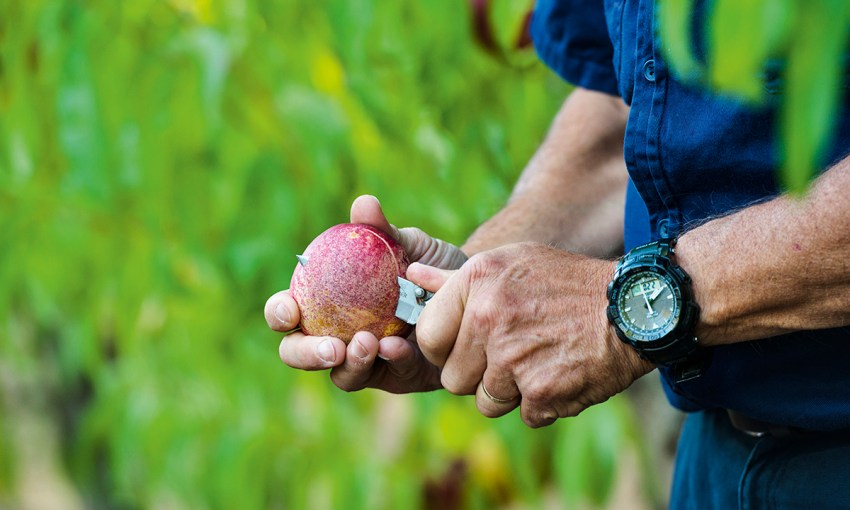Deep in the heart of stone fruit country, a Riverland producer is on a relentless mission to grow the perfect peach and nectarine.
Ripe for the picking
As you chomp into your first nectarine of the season, your taste buds might report that it’s the most delicious one you’ve ever tasted. Admittedly, those addicted to the sweet and juicy flesh of peaches and nectarines may wonder if they’ve simply forgotten what one tastes like — it’s been so long since last summer. But rest assured, each season South Australia’s Riverland producers are indeed edging closer to delivering the perfect stone fruit.
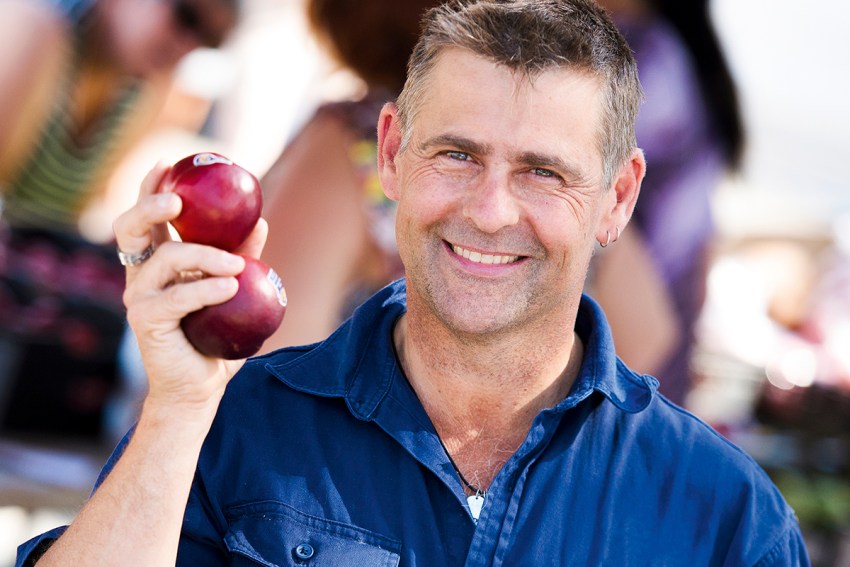
A trip to Bookpurnong Fruits, operated by Jason and Jo-Anne Size, reveals the full extent of this quest for the juicy Holy Grail. Bookpurnong, named after an Aboriginal word for wide open spaces, is a small town located on the river between Loxton and Renmark, where conditions are fantastic for growing stone fruit. “With fresh fruit on tap, we sometimes take what we have for granted. It’s a great lifestyle and a great industry, through which we’re putting back into the region and supporting the community,” Jason says.
Along with his production orchards, Jason is also a varietal researcher, growing 1100 different varieties of stone fruit, most of which he personally tests every year. In winter Jason travels to different regions around the world, particularly California and France, to check out the latest varieties coming through. “We’re at the upper echelon of varietal evaluation. I get quite a bit of feedback from overseas evaluators and breeders to say the work I do on behalf of nurseries and growers is second to none, so we’re quite proud of that.”

Jason grew up in Loxton where he met his wife-to-be, Jo-Anne, at school. He relocated to Adelaide for a couple of years, but found city life didn’t suit him, and returned home for a job at his future father-in-law’s orchard. “I’ve learnt everything I know about stone fruit from my father-in-law, Tony,” he says. Jason and Jo-Anne’s five children love spending time in the orchards, with his eldest working on the farm during the summer break from university.
Now an internationally-respected expert on stone fruit varieties, Jason has learnt that it’s a long-term game. The process of importing a new fruit variety to be cultivated for production can take nine years, from quarantine and testing to finally arriving on supermarket shelves. But when it pays off, it’s worth it. “We currently have a French white peach which is an absolute star performer. It’s only just started coming through our research and development program and it will be at least two or three years until we will get enough in production. It has great colour, great size and good yield. I can’t fault it at this stage.”
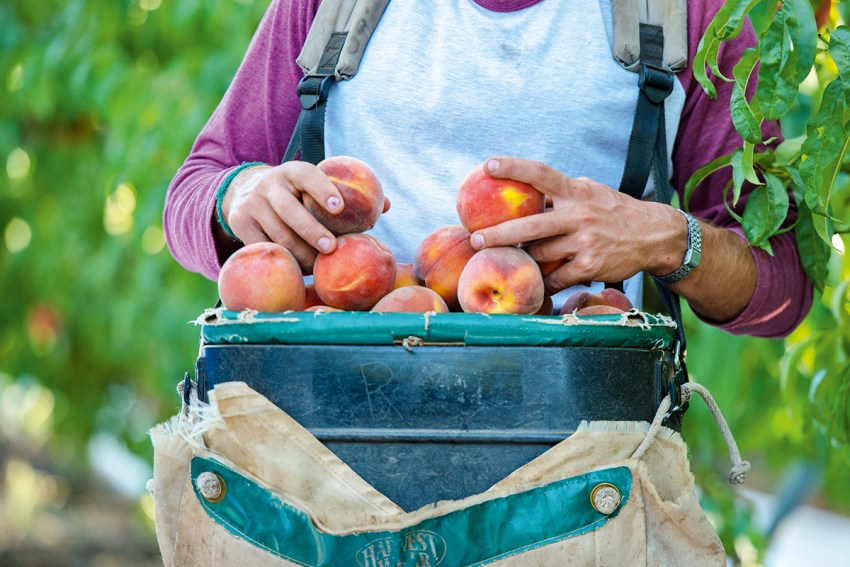
The Riverland community is underpinned by agriculture and horticulture, with fruit orchards employing both local and seasonal workers, particularly during harvest. Across his four farms, Jason will hire more than 100 pickers during the peak of harvest. One picker will fill between six and 10 250-kilograms bins of fruit per day. But picking the right fruit is an art, with a focus on quality as much as quantity.
“We monitor nearly every single bucket of fruit that is harvested to make sure our workers are on target,” Jason says. “It’s very important to make sure that the fruit they’re taking off the tree is at a correct maturity level so that, when it does get to the consumer, it tastes the best it can. There’s a lot of training involved to make sure only the best quality fruit goes into our bins.” The fruit is picked and then cooled overnight, ready to be transported to a packing shed in Renmark the next morning.
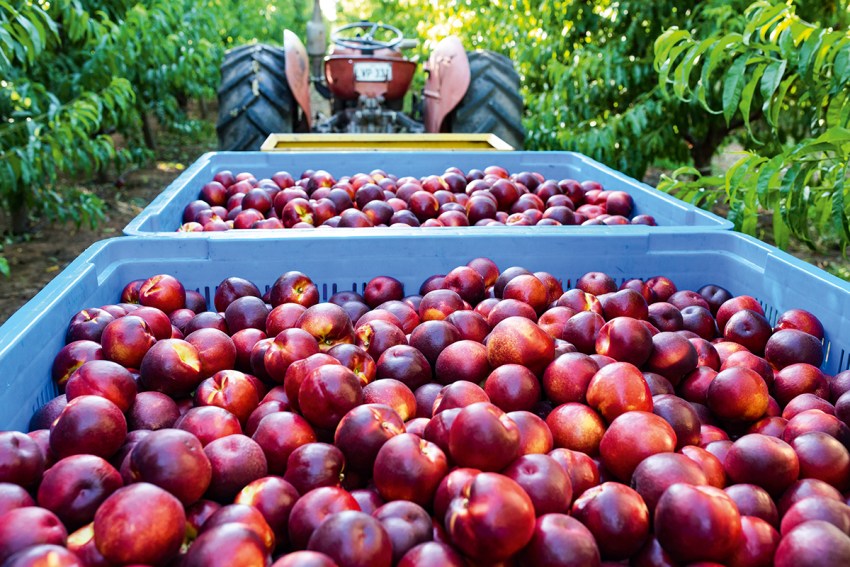
Fruit from Jason’s farms, as well as other growers in his group, can be identified by the sticker “The Chosen Ones” or “Zest” in independent supermarkets. “These stickers mean a lot of work has gone into making sure that variety is designed to give a great eating experience. It’s important for consumers to recognise South Australian fruit in the supermarket,” he says. There are many brands out there and Jason says Riverland producers are among the best. Consumers can support local producers by looking for South Australian fruit, which comprises about 15 per cent of the total national market.
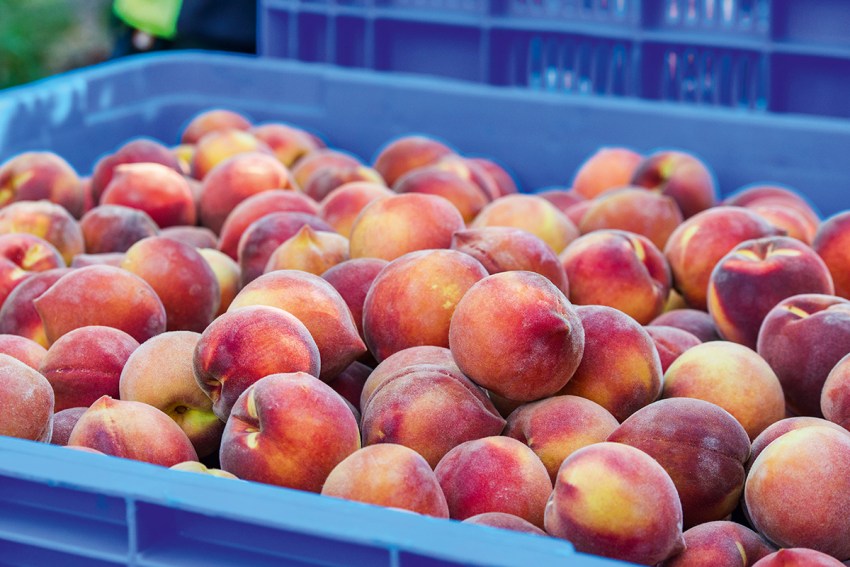
Some stickers, such as Jason’s, will specify “best eaten firm or soft”, meaning the fruit can be eaten fresh and crunchy, or left to soften and still taste delicious. The fruit is particularly good eating from early November through to late January — a season that has lengthened thanks to new varieties.
With a bit of imagination, there are plenty of ways to enjoy nectarines and peaches, and Jason’s favourite is his nectarine pie. “I start making nectarine pie for the family and friends once some of our really high-sugar and flavourful lines start coming in around by early December. There are no added sugars, just the natural flavours coming through and it tastes absolutely fantastic.”
This story first appeared in the October 2019 issue of SALIFE magazine.



